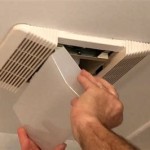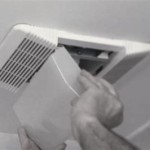Why Does My Bathroom Smell After I Clean It With Water?
A freshly cleaned bathroom should evoke a sense of hygiene and freshness. However, it is not uncommon to experience persistent unpleasant odors even after a thorough cleaning, especially when water is the primary cleaning agent. This counterintuitive situation arises from a complex interplay of factors, ranging from the nature of bathroom grime to the limitations of water as a sole cleaning solution. Understanding these factors is key to effectively eliminating bathroom odors and maintaining a truly clean and fresh environment.
One of the primary reasons why a bathroom might smell even after cleaning with water stems from the fact that water, while excellent for rinsing and diluting, is not a potent solvent for all types of bathroom soils. Bathroom environments are breeding grounds for a variety of substances that contribute to unpleasant odors. These include body oils, soap scum, dead skin cells, hair, urine, and mold or mildew. Many of these substances are hydrophobic, meaning they repel water. When water is used alone, it can spread these materials around, or dilute them temporarily, without necessarily removing them entirely from the surfaces. This leaves a residual layer of odor-causing substances that quickly re-establish themselves, leading to a return of the unpleasant smell.
Furthermore, water can actually exacerbate certain odor problems. For example, if excess water is left standing in areas prone to mold or mildew growth, it provides the ideal conditions for these organisms to flourish. Mold and mildew thrive in damp, dark environments, and their presence is a major contributor to musty or stale bathroom odors. Similarly, if water is used to clean areas contaminated with urine, it can spread the urine and further activate its odor, particularly if the area is not properly dried afterwards.
The plumbing system within the bathroom also plays a significant role in odor generation. The drain lines beneath sinks, tubs, and showers are designed with a P-trap, a U-shaped section of pipe that holds water and creates a seal, preventing sewer gases from entering the bathroom. If this P-trap dries out due to infrequent use, or if the plumbing system has ventilation issues, sewer gases can escape into the bathroom, resulting in a potent and unpleasant smell. Cleaning with water might temporarily mask this issue, but it does not address the underlying cause.
The porous nature of many bathroom surfaces further complicates the issue. Tile grout, for instance, is notoriously porous and can absorb spills and residues, trapping odor-causing substances deep within its structure. Similarly, porous natural stone surfaces can harbor bacteria and mold, contributing to persistent odors. Using only water to clean these surfaces will often fail to penetrate deep enough to remove the embedded contaminants, leaving the source of the odor intact.
Cleaning tools themselves can also inadvertently contribute to the problem. Sponges, mops, and cleaning cloths can become breeding grounds for bacteria and mold if they are not properly cleaned and dried after each use. Using these contaminated tools to clean the bathroom can simply spread bacteria and mold spores around, perpetuating the odor problem. It's important to choose cleaning tools wisely, such as microfiber cloths that are effective at trapping dirt and bacteria, and to ensure they are thoroughly cleaned and dried after each use.
The Limitations of Water as a Cleaning Agent
Water is a powerful solvent for many substances, particularly polar compounds. However, it is not effective at removing non-polar substances like oils, greases, and waxes, which are common components of bathroom grime. Additionally, water alone lacks the disinfecting properties necessary to kill bacteria and fungi that contribute to unpleasant odors. Therefore, relying solely on water for bathroom cleaning is often insufficient to thoroughly remove odor-causing substances and disinfect surfaces.
The chemical structure of water molecules allows them to form strong hydrogen bonds with other water molecules and with polar substances. This makes water an excellent solvent for dissolving salts, sugars, and other water-soluble compounds. However, non-polar substances like oils and fats lack the charged regions necessary to interact strongly with water molecules. As a result, they tend to repel water and remain undissolved. This is why cleaning with water alone often leaves a greasy or oily residue on bathroom surfaces, which can trap dirt and contribute to odor.
Furthermore, water does not possess inherent disinfecting properties. While it can help to physically remove some bacteria and fungi from surfaces, it does not kill these microorganisms. In fact, water can actually promote the growth of bacteria and fungi by providing a moist environment. In order to effectively disinfect bathroom surfaces and eliminate odor-causing microorganisms, it is necessary to use a disinfectant cleaner that contains chemicals specifically designed to kill bacteria and fungi. Common disinfectants include bleach, hydrogen peroxide, and quaternary ammonium compounds.
Hidden Sources of Odor in the Bathroom
Beyond readily visible grime and dirt, several hidden sources of odor can contribute to a lingering unpleasant smell in the bathroom. Identifying and addressing these hidden sources is crucial for achieving a truly fresh and clean environment.
One common hidden source of odor is the toilet. Even with regular flushing, urine can splash onto the surrounding floor and walls, soaking into grout and other porous surfaces. Over time, this accumulated urine can become a major source of odor. Additionally, mineral deposits can build up inside the toilet bowl and under the rim, providing a breeding ground for bacteria. Thoroughly cleaning the toilet, including the bowl, rim, and surrounding surfaces, with a disinfectant cleaner is essential for eliminating this source of odor.
Another often overlooked source of odor is the bathroom exhaust fan. The exhaust fan is designed to remove moisture and odors from the bathroom, but it can become clogged with dust and debris over time, reducing its effectiveness. This can lead to a build-up of moisture and humidity, creating an ideal environment for mold and mildew growth. Regularly cleaning the exhaust fan by removing the cover and vacuuming out the dust and debris is crucial for maintaining a fresh and odor-free bathroom.
The shower curtain or door is another potential source of odor. Shower curtains and doors can accumulate soap scum, mildew, and other residues, which can contribute to a musty or stale smell. Regularly cleaning the shower curtain or door with a mildew-resistant cleaner is essential for preventing this odor buildup. If the shower curtain is severely stained or mildewed, it may need to be replaced.
Finally, even seemingly innocuous items like bath mats and towels can contribute to bathroom odors if they are not properly cared for. Bath mats can trap moisture and dirt, creating a breeding ground for bacteria and mold. Towels that are not properly dried can also develop a musty smell. Regularly washing bath mats and towels in hot water with a disinfectant laundry detergent is essential for preventing odor buildup.
Effective Strategies for Eliminating Bathroom Odors
To effectively combat bathroom odors and maintain a fresh-smelling environment, a multi-faceted approach is required. This approach should include the use of appropriate cleaning agents, proper ventilation, and preventative measures to minimize the build-up of odor-causing substances.
Instead of relying solely on water, utilize cleaning products specifically formulated for bathroom use. These products typically contain detergents, surfactants, and disinfectants that are effective at removing soap scum, body oils, urine, and other common bathroom grime. Look for cleaners that are specifically designed to kill bacteria and fungi, as these microorganisms are often the primary source of unpleasant odors. When using cleaning products, always follow the manufacturer's instructions carefully.
Ensure that the bathroom is properly ventilated. After showering or bathing, run the exhaust fan for at least 20 minutes to remove excess moisture and humidity. This will help to prevent mold and mildew growth, which is a major contributor to bathroom odors. If the bathroom does not have an exhaust fan, consider installing one. Alternatively, open a window to allow for air circulation.
Regularly clean and maintain the bathroom to prevent the build-up of odor-causing substances. This includes wiping down surfaces after each use, cleaning the toilet and shower regularly, and laundering bath mats and towels frequently. Addressing spills and messes promptly will also help to prevent odors from becoming ingrained in surfaces. A consistent cleaning routine is far more effective than infrequent deep cleaning sessions.
Address any plumbing issues that may be contributing to odors. If the bathroom smells like sewage, there may be a problem with the P-trap in the drain lines. Pour water down infrequently used drains to ensure that the P-trap remains filled with water. If the odor persists, consult a plumber to inspect the plumbing system for ventilation issues or other problems.
Consider using odor absorbers to help neutralize unpleasant smells. Baking soda is a natural odor absorber that can be placed in an open container in the bathroom to absorb odors. Activated charcoal filters are another effective option for removing odors from the air. Air fresheners can also be used to mask odors, but they are not a substitute for proper cleaning. It is important to address the underlying cause of the odor rather than simply covering it up.

Why Does Toilet Smell Bad Even After Cleaning It Plumbing Service Sg

Why Does Toilet Smell Bad Even After Cleaning It Plumbing Service Sg

Smelly Bathroom 4 Tips From Our Bentleigh Plumbers Watermaster Plumbing

Why Does My Bathroom Smell Like Urine A Guide For Curious Homeowners Calahan Bath Kitchen And Sunrooms
Why Is There A Sewage Smell In Your Bathroom Howstuffworks

Why Does My Toilet Stink Out Of This World

Why Does Your Clean Toilet Smell So Bad Diy Methods

How To Get Rid Of Sewage Smell In Your Bathroom Bond Cleaning Adelaide

How To Get Rid Of The Sewer Smell From A Bathroom Terry S Plumbing

The Complete Guide To Getting Rid Of Urine Smell In Bathroom
Related Posts







